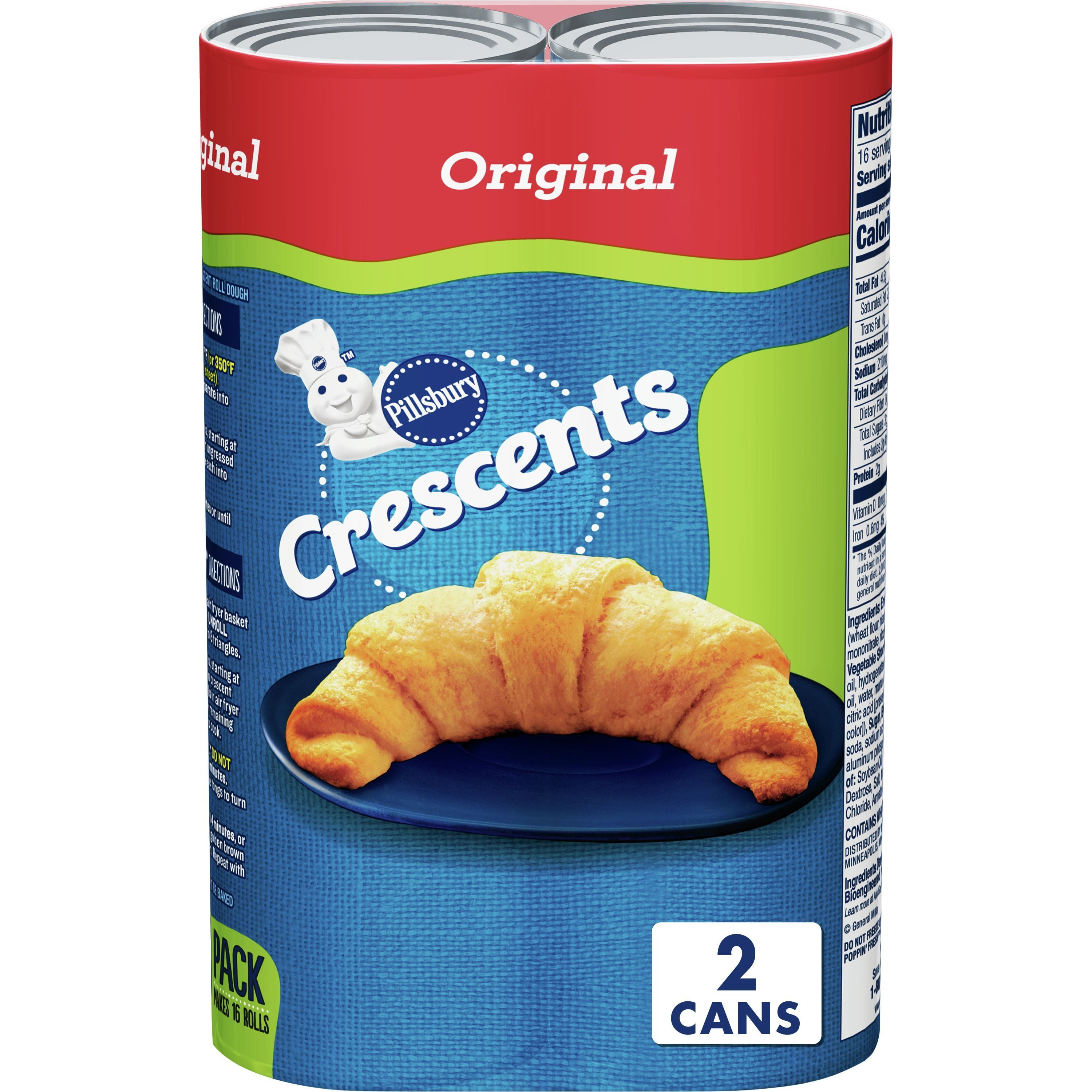Unlock the Secret to Perfect Croissants: Discover Pillsbury's Revolutionary Technique
When it comes to flaky, buttery, and crispy croissants, many of us dream of mastering the art of layering dough and rising to new heights. However, for the average baker, creating perfect croissants can be a daunting task. The process requires patience, precision, and a deep understanding of yeast fermentation, laminating, and proofing. But what if you could unlock the secret to making perfect croissants with ease?
For years, Pillsbury has been perfecting their croissant recipe, using a revolutionary technique that involves a specific ratio of yeast to butter, a precise proofing schedule, and a specialized laminating process. By combining these factors, Pillsbury has created a croissant recipe that is both easy to make and achieves unparalleled flakiness and flavor. In this article, we will delve into the world of croissant making and explore the secrets behind Pillsbury's revolutionary technique.
Understanding the Challenges of Croissant Making
Creating perfect croissants requires a deep understanding of the underlying science behind the dough. Yeast fermentation is a critical component of the croissant-making process, as it provides the necessary carbon dioxide to create air pockets in the dough. However, over-proofing or under-proofing can lead to a dense or tough final product.
Another challenge is the laminating process, which involves folding and rolling the dough multiple times to create the signature flaky layers. This process requires precision and patience, as the dough must be folded and rolled with the right amount of tension to create the desired layers.
Pillsbury's Revolutionary Technique
At the heart of Pillsbury's croissant recipe is a specific ratio of yeast to butter, which is designed to promote optimal yeast fermentation. This ratio is crucial in creating the right balance of flavor and texture in the final product.
In addition to the yeast-to-butter ratio, Pillsbury's recipe also calls for a precise proofing schedule, which involves letting the dough rest at a specific temperature and humidity level for a set amount of time. This allows the yeast to ferment the sugars in the dough, producing the necessary carbon dioxide to create air pockets.
Pillsbury's laminating process is also noteworthy. The company uses a specialized machine that folds and rolls the dough with a precise amount of tension, creating the signature flaky layers. This process requires a great deal of skill and practice, but the results are well worth the effort.
The Science Behind the Laminating Process
The laminating process is a critical component of the croissant-making process, as it creates the signature flaky layers in the dough. But what exactly happens during this process?
When the dough is folded and rolled, the layers of butter and dough are separated by tiny air pockets. As the dough is folded and rolled again, these air pockets are compressed, creating even more air pockets between the layers of butter and dough.
This process is repeated multiple times, with each fold and roll creating more and more layers of butter and dough. The result is a dough that is both flaky and tender, with a delicate balance of flavor and texture.
Tips for Achieving Flaky Layers
While Pillsbury's laminating process is a key component of their croissant recipe, there are several tips and techniques that can help you achieve flaky layers in your own dough.
- Use the right amount of butter: Too little butter can lead to a dense, tough final product, while too much butter can make the dough difficult to roll out.
- Keep the dough cold: A cold dough is essential for creating flaky layers, as it helps to prevent the butter from melting and the dough from becoming too soft.
- Use the right rolling technique: Rolling the dough with the right amount of tension is critical for creating even, flaky layers.
The Role of Yeast in Croissant Making
Yeast is a critical component of the croissant-making process, as it provides the necessary carbon dioxide to create air pockets in the dough. However, yeast can be finicky, and over-proofing or under-proofing can lead to a dense or tough final product.
In Pillsbury's croissant recipe, the yeast is used in a specific ratio to promote optimal fermentation. This ratio is crucial in creating the right balance of flavor and texture in the final product.
Tips for Working with Yeast
While yeast can be finicky, there are several tips and techniques that can help you work with it effectively.
- Use the right type of yeast: Different types of yeast are suited to different environments and ingredients. Make sure to use a yeast that is specifically designed for croissant making.
- Provide the right environment: Yeast needs a warm, humid environment to ferment. Make sure to proof the yeast in a warm, draft-free place before adding it to the dough.
- Don't over-proof: Over-proofing can lead to a dense or tough final product. Make sure to check the dough regularly and remove it from proofing as soon as it reaches the desired level of rise.
Conclusion
Creating perfect croissants requires a deep understanding of the underlying science behind the dough. By mastering Pillsbury's revolutionary technique, you can unlock the secret to making perfect croissants with ease. Remember to use the right amount of yeast to butter, follow a precise proofing schedule, and master the laminating process to create the signature flaky layers.
By following these tips and techniques, you can create a croissant recipe that is both easy to make and achieves unparalleled flakiness and flavor. So why not give it a try? With Pillsbury's revolutionary technique, you can unlock the secret to perfect croissants and become a master baker.
Additional Tips and Resources
- Use a digital thermometer to ensure the dough is at the right temperature for proofing.
- Invest in a good quality stand mixer to make the laminating
Google Places Local Rank Tracker
The Prophecy Taylorwift
Kaitlynkrems Fans
Article Recommendations
- Did Mason Lose His Leg
- Local Google Ranking Check
- Batya Ungar Sargon Husband
- Shannonharpe Wife
- Matt Czuchry
- Icepice
- Sam Frank Fans
- Is Gloria Borger Ill
- Karen Velez
- Nia Renee Hill



